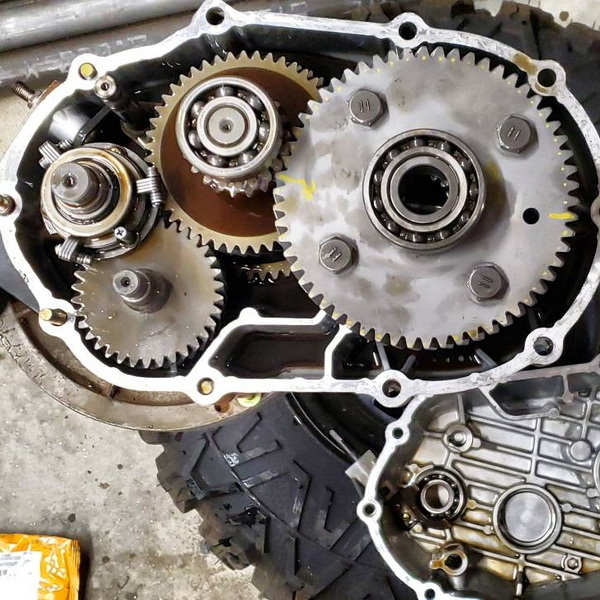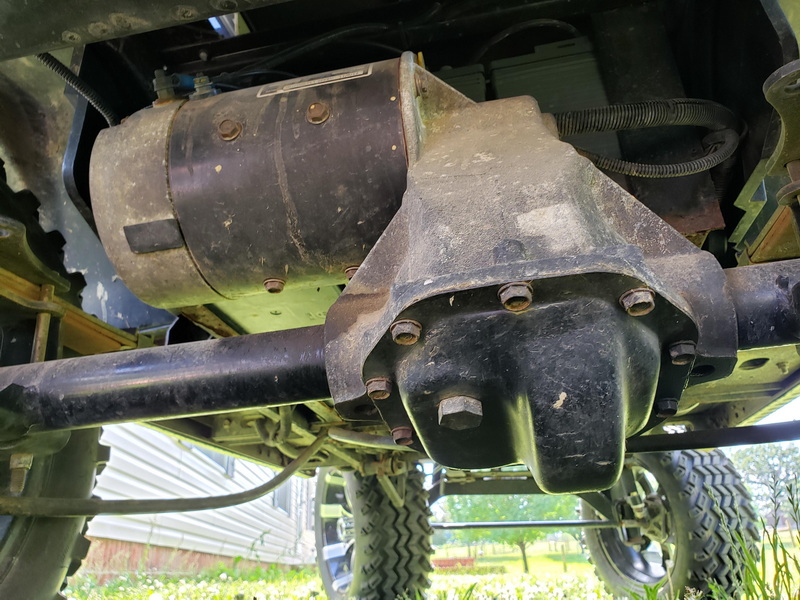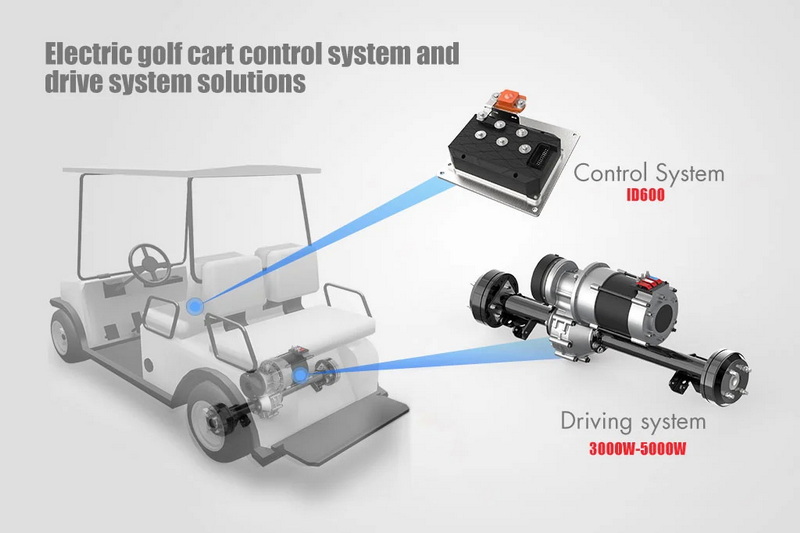Content Menu
● Understanding Rear End Gears
● Benefits of Changing Rear End Gears
● Tools and Materials Needed
● Step-by-Step Guide to Changing Rear End Gears
>> Step 1: Preparation
>> Step 2: Accessing the Rear End
>> Step 3: Disassembling the Rear End
>> Step 4: Installing New Gears
>> Step 5: Reassembling the Rear End
>> Step 6: Final Steps
● Important Considerations
● Troubleshooting Common Issues
● Maintenance Tips
● Conclusion
● Frequently Asked Questions
>> 1. How often should I change the rear end gears in my electric golf cart?
>> 2. Can I change the rear end gears myself, or should I hire a professional?
>> 3. How does changing the rear end gears affect my golf cart's warranty?
>> 4. What are the signs that I need to change my golf cart's rear end gears?
>> 5. How much does it typically cost to change the rear end gears in an electric golf cart?
Changing the rear end gears in an electric golf cart can significantly improve its performance, whether you're looking for increased speed, better torque for climbing hills, or improved overall efficiency. This comprehensive guide will walk you through the process of changing the rear end gears in your electric golf cart, providing detailed instructions, helpful tips, and important considerations to keep in mind.

Understanding Rear End Gears
Before diving into the process of changing rear end gears, it's essential to understand what they are and how they affect your golf cart's performance. The rear end gears, also known as the final drive gears or differential gears, are responsible for transmitting power from the motor to the wheels. The gear ratio determines the balance between speed and torque in your golf cart.
A lower gear ratio (e.g., 6:1) provides more torque, which is beneficial for climbing hills and carrying heavy loads. On the other hand, a higher gear ratio (e.g., 12:1) allows for greater top speed on flat terrain. By changing these gears, you can customize your golf cart's performance to better suit your specific needs and driving conditions.
Benefits of Changing Rear End Gears
1. Improved Speed: If you primarily use your golf cart on flat courses, increasing the gear ratio can help achieve higher top speeds.
2. Better Torque: For hilly terrains, a lower gear ratio can provide the necessary torque to climb steep inclines without straining the motor.
3. Enhanced Efficiency: Adjusting the gear ratio can lead to more efficient use of the motor, potentially extending battery life and improving overall performance.
4. Customization: Changing the rear end gears allows you to tailor the performance of your golf cart to your specific needs and preferences.
Tools and Materials Needed
Before you begin the process of changing your golf cart's rear end gears, gather the following tools and materials:
- Socket set and ratchet
- Wrench set
- Screwdrivers (flathead and Phillips)
- Pliers
- Gear puller
- New gear set (specific to your golf cart model)
- Gear oil or lubricant
- Gasket maker or sealant
- Clean rags
- Safety goggles and gloves
- Jack and jack stands
Step-by-Step Guide to Changing Rear End Gears
Step 1: Preparation
1. Park your golf cart on a flat, level surface and engage the parking brake.
2. Disconnect the battery to ensure safety during the process.
3. Raise the rear of the golf cart using a jack and secure it with jack stands.
4. Remove the rear wheels to access the rear end assembly.
Step 2: Accessing the Rear End
1. Locate the rear end housing, which is typically positioned between the rear wheels.
2. Remove any covers or protective plates to expose the rear end assembly.
3. Drain the existing gear oil from the rear end housing by removing the drain plug.

Step 3: Disassembling the Rear End
1. Remove the axle retaining bolts and carefully slide out the axles.
2. Unbolt and remove the differential cover to expose the gears.
3. Take note of the current gear arrangement and orientation.
4. Use a gear puller to remove the existing gears from the differential.
Step 4: Installing New Gears
1. Clean the differential housing thoroughly, removing any debris or old gasket material.
2. Install the new gears, ensuring proper alignment and orientation.
3. Apply a thin layer of gear oil to the new gears to provide initial lubrication.
4. Reassemble the differential, making sure all components are properly seated.
Step 5: Reassembling the Rear End
1. Apply a new gasket or gasket maker to the differential cover.
2. Reinstall the differential cover, tightening the bolts in a cross-pattern to ensure even pressure.
3. Reinsert the axles and secure them with the retaining bolts.
4. Refill the rear end housing with the appropriate type and amount of gear oil.
Step 6: Final Steps
1. Reinstall the rear wheels and lower the golf cart from the jack stands.
2. Reconnect the battery.
3. Conduct a test drive to ensure proper operation and listen for any unusual noises.

Important Considerations
1. Gear Ratio Selection: Choose a gear ratio that suits your specific needs. Consider factors such as terrain, typical load, and desired speed.
2. Quality of Gears: Invest in high-quality gears from reputable manufacturers to ensure durability and optimal performance.
3. Proper Lubrication: Use the correct type and amount of gear oil as specified by your golf cart's manufacturer.
4. Break-in Period: After installing new gears, allow for a break-in period of about 100 miles of gentle driving to ensure proper seating and longevity of the gears.
5. Professional Assistance: If you're unsure about any step in the process, don't hesitate to seek help from a professional golf cart mechanic.
Troubleshooting Common Issues
Even with careful installation, you may encounter some issues after changing your rear end gears. Here are some common problems and their potential solutions:
1. Unusual Noises: If you hear grinding or whining noises, it could indicate improper gear mesh. Double-check the installation and adjust as necessary.
2. Reduced Performance: If you experience a loss of power or speed, ensure that you've selected the appropriate gear ratio for your needs and that all components are properly installed.
3. Oil Leaks: Check for any signs of oil leakage around the differential cover or axle seals. Tighten bolts or replace gaskets if necessary.
4. Vibration: Excessive vibration could be caused by misaligned gears or damaged bearings. Inspect and replace components as needed.
Maintenance Tips
To ensure the longevity and optimal performance of your new rear end gears, follow these maintenance tips:
1. Regular Oil Changes: Change the gear oil according to the manufacturer's recommendations or every 1,000 miles, whichever comes first.
2. Periodic Inspections: Regularly inspect the rear end for signs of wear, damage, or leaks.
3. Proper Loading: Avoid overloading your golf cart, as this can put excessive strain on the gears and other components.
4. Smooth Operation: Avoid sudden starts and stops, which can cause unnecessary wear on the gears.
Conclusion
Changing the rear end gears in your electric golf cart can significantly enhance its performance and tailor it to your specific needs. While the process may seem daunting at first, with the right tools, knowledge, and patience, it's a task that many golf cart enthusiasts can accomplish. Remember to prioritize safety, follow the steps carefully, and don't hesitate to seek professional help if needed.
By understanding the process and considering the factors involved, you can make an informed decision about whether changing your golf cart's rear end gears is the right choice for you. Whether you're looking for increased speed, better hill-climbing ability, or improved efficiency, a gear change can help you achieve your goals and enhance your overall golfing experience.

Frequently Asked Questions
1. How often should I change the rear end gears in my electric golf cart?
The frequency of rear end gear changes depends on various factors, including usage, terrain, and maintenance. Generally, rear end gears can last for several years or even the lifetime of the golf cart if properly maintained. However, if you notice a significant decrease in performance or unusual noises coming from the rear end, it may be time to consider changing the gears.
2. Can I change the rear end gears myself, or should I hire a professional?
While changing rear end gears is a task that can be accomplished by experienced DIY enthusiasts, it requires a certain level of mechanical knowledge and specialized tools. If you're comfortable working on vehicles and have the necessary tools, you can attempt the change yourself. However, if you're unsure about any aspect of the process, it's best to consult a professional golf cart mechanic to ensure proper installation and avoid potential damage to your cart.
3. How does changing the rear end gears affect my golf cart's warranty?
Changing the rear end gears may affect your golf cart's warranty, especially if it's still under the manufacturer's warranty period. Some manufacturers consider gear changes as modifications that could void the warranty. It's essential to check your warranty terms or consult with the manufacturer before making any modifications to your golf cart.
4. What are the signs that I need to change my golf cart's rear end gears?
Some signs that indicate you may need to change your golf cart's rear end gears include:
- Difficulty climbing hills or carrying heavy loads
- Reduced top speed on flat terrain
- Unusual noises coming from the rear end, such as grinding or whining
- Excessive wear on the existing gears
- A desire to customize your cart's performance for specific needs or terrain
5. How much does it typically cost to change the rear end gears in an electric golf cart?
The cost of changing rear end gears can vary widely depending on several factors, including the make and model of your golf cart, the quality of the new gears, and whether you do the work yourself or hire a professional. On average, you can expect to spend between $200 to $600 for a complete gear change, including parts and labor. DIY enthusiasts can save on labor costs but will need to invest in the necessary tools if they don't already have them.











































